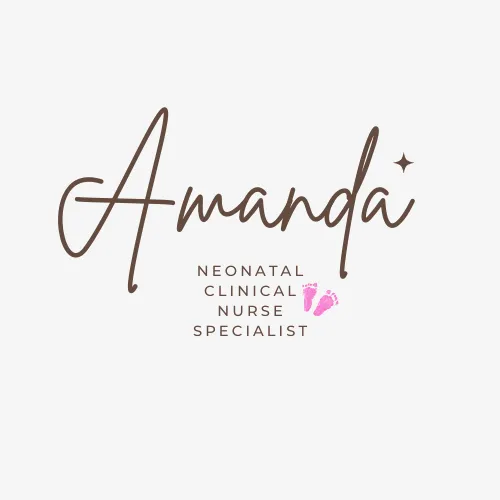
Welcome to Amanda's NICU Education




Hi! My name is Amanda. I'm a NICU nurse, Clinical Nurse Specialist, NICU Educator... basically your NICU BFF. If you want to talk NICU, I'm here for you! I love everything about NICU nursing and I'm eager to learn and share my knowledge with all my NICU friends.
I have been a NICU nurse since 2009 I am currently a Clinical Nurse Specialist in a Level IV NICU in Los Angeles.
I am passionate about educating the next generation of NICU nurses. I share my knowledge through platforms such as Instagram and Facebook and am excited to have you here on my website!
Click on the button below to sign up for my newsletter filled with NICU education and tips for all experience levels.

Not very many people love taking tests but as a self-acclaimed "forever student" who has taken (and passed) five different certification exams I am no longer afraid of tests! "Way to brag", you might be thinking but I want to help YOU pass your certification exam too!
Introducing Amanda's RNC-NIC Success digital course - your ultimate study companion!
Gain unlimited, on-demand access for life, ensuring you're primed to ace your certification exam.
I'm here to help you succeed and I can't wait for you to share with me that you PASSED the RNC-NIC EXAM!!!









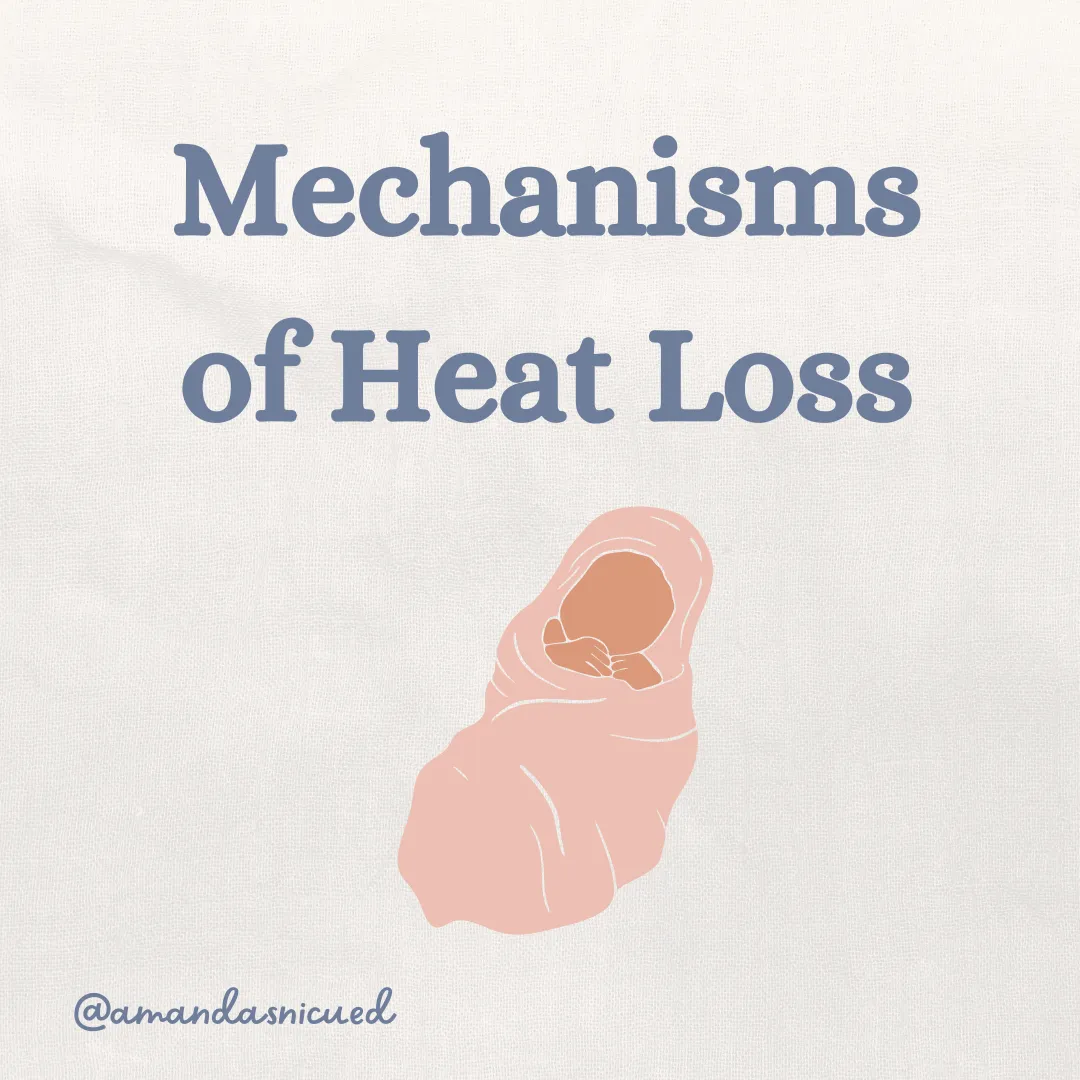
Mechanisms of Heat Loss
Mechanisms of Heat Loss
As NICU nurses, it is crucial to understand the mechanisms of heat loss in newborns to provide optimal care. Heat loss can significantly impact neonatal thermoregulation, leading to potential complications. In this post, we will explore the four primary methods of heat loss in newborns: conduction, convection, evaporation, and radiation. By understanding these mechanisms, you can implement effective strategies to prevent heat loss and ensure thermoregulation in your NICU practice.
Conduction:
Conduction refers to the transfer of heat between objects in direct contact. In newborns, heat loss through conduction occurs when they come into contact with a cooler surface, such as a cold examination table or equipment. To minimize conduction heat loss, ensure that all surfaces in contact with the infant are adequately warmed. Use pre-warmed blankets or radiant warmers during procedures and minimize the time spent on cold surfaces.
Convection:
Convection involves heat loss through the movement of air currents around the baby. In the NICU, drafts from open doors, windows, or ventilation systems can contribute to convective heat loss. Additionally, air-conditioning or high-flow oxygen devices can exacerbate convective heat loss. To reduce convective heat loss, maintain a warm and draft-free environment in the NICU. Use appropriate coverings to shield the baby from drafts and ensure that the temperature and humidity of the room are within the recommended range.
Evaporation:
Evaporative heat loss occurs when moisture on the baby's skin and respiratory tract evaporates, resulting in cooling. This mechanism is particularly significant during bathing, when wet linens or clothing are left exposed, or in cases of respiratory distress where increased respiratory rate leads to enhanced water loss. To minimize evaporative heat loss, ensure that newborns are dried thoroughly after bathing, and promptly replace wet linens or clothing. In cases of respiratory distress, provide humidified oxygen to minimize water loss through respiration.
Radiation:
Radiation heat loss occurs when a newborn's body radiates heat to cooler surrounding surfaces without direct contact. Cold walls, windows, or incubator surfaces can cause radiation heat loss. To prevent this, position the baby away from cold surfaces and ensure that incubators are properly insulated. Use temperature probes to monitor and maintain the infant's thermal environment accurately.
Understanding the different methods of heat loss in newborns is vital for NICU nurses. By recognizing and addressing the factors contributing to conduction, convection, evaporation, and radiation heat loss, you can help maintain optimal thermoregulation in your tiny patients. Ensure appropriate environmental conditions, use warm surfaces and coverings, practice proper drying techniques, and monitor the newborn's thermal status regularly. Through these interventions, you can provide a warm and nurturing environment for newborns, promoting their growth, development, and overall well-being in the NICU.
WANT MORE FREE TIPS FROM ME?
Sign up for my free course. Click on the image below


December 2023 Certification Review Webinar
NICU Certification Review


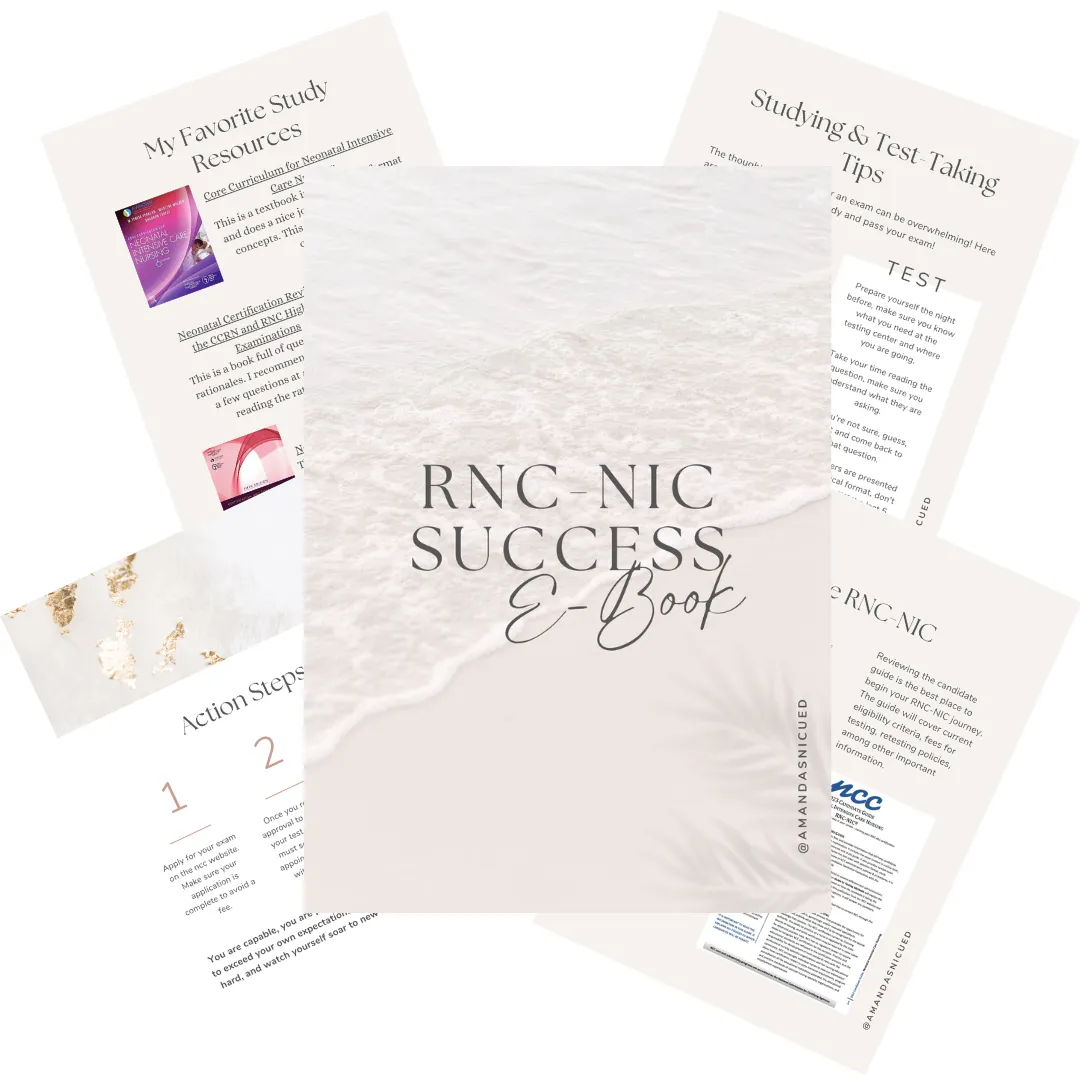
Ready to kickstart your journey to becoming a certified NICU nurse?
Look no further!
Grab my FREE E-Book packed with essential study and test-taking strategies for the RNC-NIC.
In the E-Book I give you the resources you need including the link to access the candidate guide, several types of books to study from, some of my favorite strategies, an outline of the content you should review, and a blank calendar for you to make your study plan!
Frequently Asked Questions About the RNC-NIC exam

What is the RNC-NIC?
The RNC-NIC is a competency-based exam that tests the specialty knowledge of nurses in the United States & Canada who care for critically ill newborns and their families.
The RNC-NICU is a nationally recognized certification that recognizes the registered nurse for their specialty knowledge and skill.
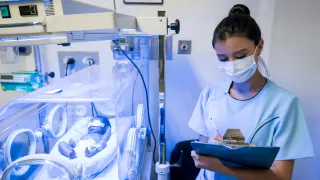
Who can take the RNC-NIC exam?
Nurses can take this exam after a minimum of two years experience in the NICU caring for critically ill newborns and their families.

Which books should I use?
I'm glad you asked! There are many excellent books to help you prepare for the RNC-NIC, I gathered ande describe each of them for you in my FREE e-book.
Is there a course to help me study?
Yes! Many hospitals host their own certification course and there are a few online courses. See my RNC-NIC test taking tips E Book for more information
What happens if I don't pass the exam?
If you don't pass the exam on your first try you can try again after 90 days. You will have to reapply after 90 days and pay a retest fee. There is no limit to the number of times you can take the exam (however a candidate can only sit for the exam twice per year).
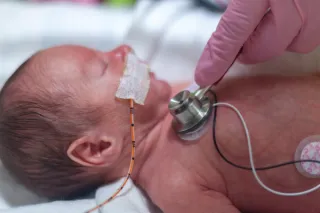
Can I make more money if I take the RNC-NIC exam and get certified?
Yes! Many hospitals provide a raise or a bonus for nurses with specialty certifications. Hospitals also typically hire at a higher base salary when nurses have a certification.

Find me @amandasnicued on these channels or Email me
hey nurses don't miss out
© Copyright 2024. AmandasNICUEd. All rights reserved. | Terms & Conditions | Privacy Policy Contact: [email protected]
